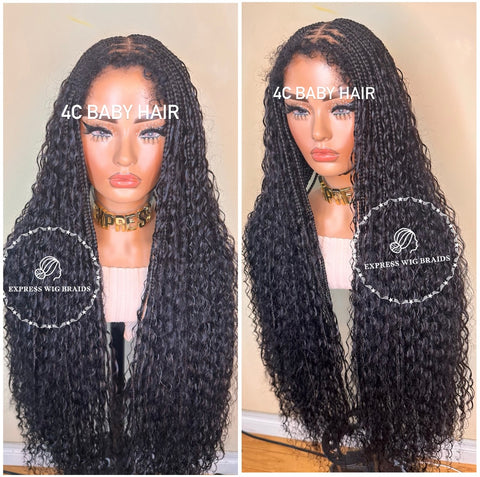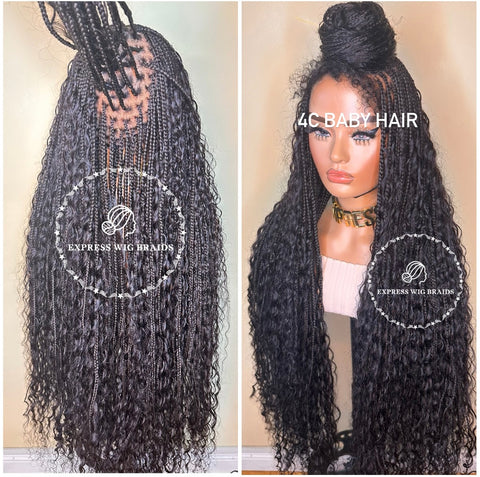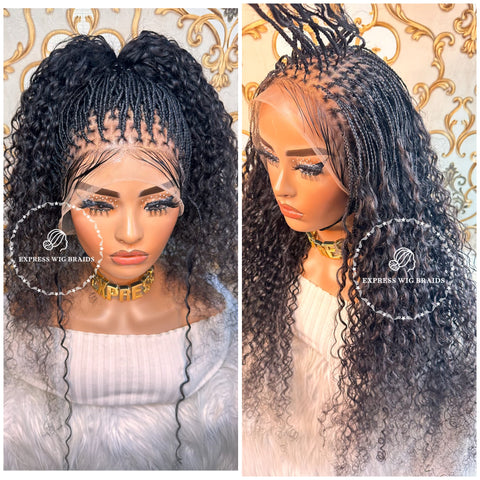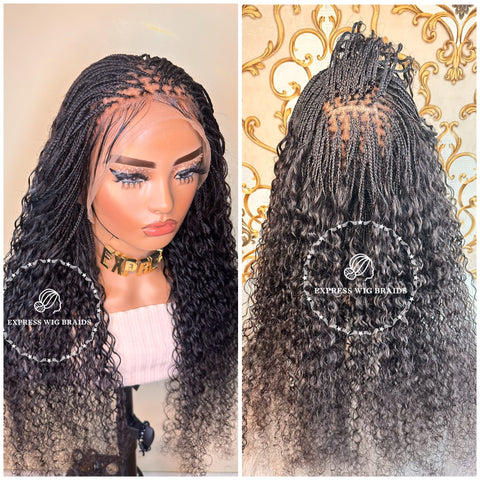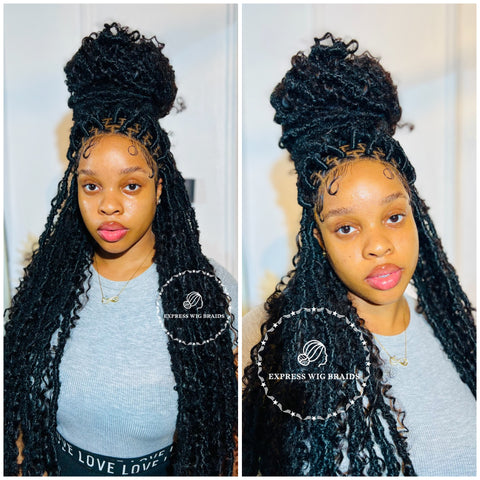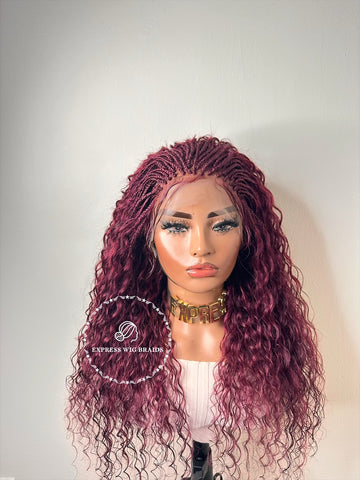How to Grow Back, Protect, and Maintain Your Edges: A Complete Guide
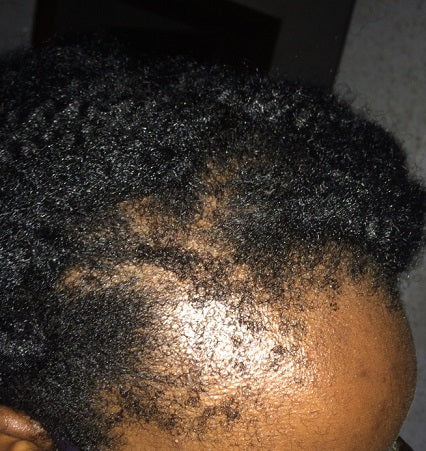
Are you suffering from hair loss along your edges? Here is a complete guide to help you through the process of how to get your edges back full and healthy again!
Growing back hair edges can be challenging, particularly for those who have traction alopecia and other types of hair loss along the hairline. However, the good news is that your baby hair can usually grow back with the right care and the use of organic hair care products.
Baby hairs, otherwise known as edges are the thin wispy hair on your hairline. They are the most fragile part of your hair.
Are you ready to grow, protect, and maintain your edges? Let’s get started!
What are the Causes of Hair Loss Along the Edges?
It is important to understand the underlying cause of your hair loss along the edges if you want to protect and maintain them. Here are some of the reasons your edges may be thinning or receding:
1. Heat Damage, Chemical Treatments, or Harsh Products: Applying heat too frequently and chemically treating your hair with color or relaxers may be the cause of your hair breaking or thinning along the edges. Your hair is also liable to get dry and break off if you've been using products integrated with harsh substances.
2. High Tension Hairstyles: Thinning edges and hair loss are most frequently caused by making tight hairstyles that strain the scalp. Also, hair extensions and weaves that are sewn or glued across your hairline can result in traction alopecia due to how they pull on your hair.
3. Stress: If you've recently experienced stress, your hair cycle may be disrupted, making your hairline fragile.
4. Poor Diet: When your body does not receive enough minerals, vitamins, and nutrients to function properly, it can have an impact on the health of your hair and scalp. If your diet is lacking in nutrients, try supplements that help promote your hair growth.
5. Medical Conditions: Medical conditions such as anemia, cancer, postpartum shedding, androgenetic alopecia, and low vitamin D levels might have an impact on your hair. It’s advisable to contact your doctor to see if you have any medical conditions that could be causing your hair loss.
Now let’s look at how to grow your edges back full and healthy. Stay glued!
How to Grow Your Edges Back
Reversing certain unhealthy hair habits, employing natural curly hair styling products, and changing up your styles is crucial in getting your edges back. Here’s what you can do to get your edges back:
1. Address Underlying Health Conditions: Treat any underlying health conditions or deficiencies that may be causing your hair loss. You should also ensure to follow your healthcare provider's advice on how to manage any health issues.
2. Use Gentle Products: Use a gentle shampoo and conditioner to cleanse and remove buildup from your scalp. Organic hair care products shouldn’t be left out as well. They are safe and healthy for the overall health of your hair.
We recommend Potent 19 Organic Herbal Hair Growth Oil with Black Rice Extract for the best results, as it contains natural ingredients that nourish, and strengthen your hair. This organic product is 150% extra active and it contains peppermint essential oil, fenugreek seed, black castor oil, along with other powerful ingredients to give your hair all the nutrients it needs to grow back.
3. Limit Heat Usage: Excessive heat harms the entire health of your hair, particularly your edges as it weakens your hair and causes breakage. Limit your use of heat equipment such as flat irons, curlers, and blow dryers, and if you must, apply a heat protectant spray and lower heat settings.
4. Reduce Tension: Avoid hairstyles that put too much tension on your edges, such as tight braids, ponytails, and weaves. Choose looser styles or protective hairstyles that do not pull on your hairline.
5. Use Satin or Silk Accessories: Use a silk or satin pillowcase to cushion your edges as you sleep, or cover your hair with a satin or silk scarf. Cotton pillowcases are prone to breaking your hair from friction, particularly in the area near the hairline.
6. Eat a Nutritious Diet: To encourage healthy hair growth, eat a diet rich in protein, vitamins, and minerals. Include fruits, vegetables, lean meats, and omega-3 fatty acids in your diet.
7. Consider Taking Supplements: Vitamins A, C, D, and E, as well as omega-3 fatty acids, are supplements that may help promote hair development. Talk to your healthcare provider before beginning any new supplement intake.
8. Take a Break: It is not advisable to wear protective styles for longer than three months if you have thin edges. Give your hair a break for a week or thereabout after loosening a protective style to prevent damage.
9. Be Patient and Consistent: Keep in mind that it will take some time to grow back your edges. Give your hair the time it needs to grow and stick to a regular hair care routine.
And that’s it! Be ready to have your edges back full and healthy.
Meanwhile, let’s take a look at a few tips to help protect and maintain your edges when you have them back.
Protecting and Maintaining Your Edges
Integrating these tips into your hair care routine will help you protect and maintain the thin wispy hair on your hairline.
- Firstly, treat your hair with gentle care, particularly in the areas around the edges. When detangling or styling your hair, use soft strokes and refrain from over-brushing, combing, or pulling.
- Next, use hair oil or a light moisturizer to keep your edges moisturized to avoid dryness and breakage.
- Maintaining healthy hair growth and avoiding dryness and breakage requires adequate water. Drink enough water daily to help you stay hydrated.
Growing back, protecting, and maintaining your edges is a gradual process that requires a combination of the right hair care practices and a healthy lifestyle.
Finally, if you're looking for a protective braided wig to keep your edges tucked in and shielded from damage, check out the best braided wig hairstyles for alopecia.




